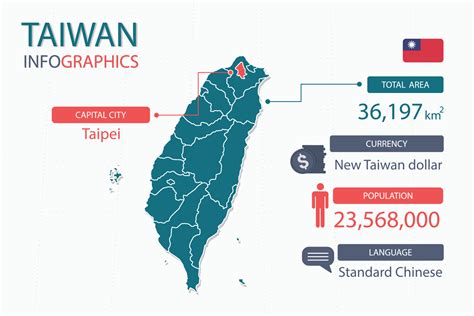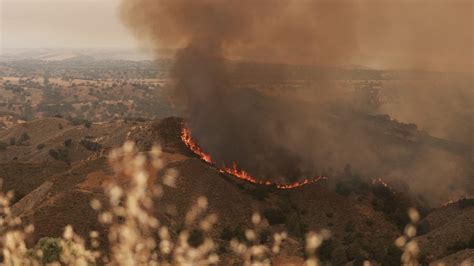Taiwan, officially known as the Republic of China (ROC), is an island nation located in East Asia, situated approximately 180 kilometers off the coast of mainland China. The country’s size and geography play a crucial role in shaping its economy, culture, and international relations. To understand Taiwan’s significance, it’s essential to explore its key geographical facts and how they impact the nation’s development.
Location and Geography
Taiwan is part of a group of islands that also includes the Pescadores, Green Island, and Orchid Island, among others. The main island of Taiwan has a total area of about 36,197 square kilometers (13,974 square miles), making it slightly larger than the Netherlands or the state of Maryland in the United States. The terrain is diverse, with mountains covering about two-thirds of the island, a coastal plain on the western side, and a slightly narrower plain on the eastern coast.
Mountainous Terrain
The rugged terrain of Taiwan is characterized by the Central Mountain Range, which runs from the northern tip to the southern end of the island. This range is home to Yushan (Jade Mountain), the highest peak in Taiwan and Northeast Asia, standing at 3,952 meters (12,966 feet). The mountainous regions are densely forested and are a key part of Taiwan’s biodiversity, with numerous species of flora and fauna. However, this terrain also poses challenges, including limited arable land and the risk of landslides and earthquakes.
Coastal Plains
The western coastal plain is where most of Taiwan’s population resides and is the hub of its economic activity. Cities like Taipei (the capital), Taichung, and Kaohsiung are located here, benefiting from the easier access to international trade and the more fertile land for agriculture. The eastern coastal plain is narrower and less populated, but it offers breathtaking natural scenery, including the famous Taroko Gorge.
Size and Population Density
As of the latest estimates, Taiwan has a population of over 23 million people, making it one of the most densely populated countries in the world. With an average of about 673 people per square kilometer (1,743 people per square mile), Taiwan’s population density is significantly higher than that of most countries. This density, combined with the country’s limited land area, presents unique challenges for urban planning, resource management, and environmental conservation.
Economic Implications
Taiwan’s size and geography significantly influence its economy. The lack of natural resources means Taiwan must rely heavily on imports, making trade a vital component of its economic strategy. On the other hand, the country’s rugged terrain has limited the development of certain industries but has also fostered a strong focus on technology and manufacturing, where Taiwan is a world leader. The IT sector, particularly in the production of semiconductors and consumer electronics, is a cornerstone of Taiwan’s economy, thanks in part to its highly educated and densely packed population.
International Relations and Security
Taiwan’s geopolitical situation is complex and sensitive, largely due to the “One China” policy, which recognizes only one Chinese government. The People’s Republic of China (PRC) claims Taiwan as its own territory, a claim the ROC disputes. This situation has significant implications for Taiwan’s international relations and security. Despite these challenges, Taiwan maintains diplomatic relations with a few countries and participates in international organizations under various names, such as “Chinese Taipei” in the Olympic Games.
Environmental Concerns
The combination of Taiwan’s geography and dense population poses significant environmental challenges. Pollution, deforestation, and the effects of climate change, such as rising sea levels and more frequent typhoons, are pressing issues. The government and citizens are increasingly focusing on sustainable practices, renewable energy, and conservation efforts to protect Taiwan’s natural beauty and biodiversity.
Conclusion
Taiwan’s size and geography are pivotal elements in understanding its unique position in the world. From its stunning natural landscapes to its densely populated cities, Taiwan’s development is deeply intertwined with its physical environment. As the country navigates the complexities of international relations, economic growth, and environmental preservation, its geography will continue to play a central role in shaping its future.
What is the total area of Taiwan?
+Taiwan has a total area of approximately 36,197 square kilometers (13,974 square miles), including the main island and several smaller islands.
What are the main geographical features of Taiwan?
+Taiwan's geography is characterized by its mountainous terrain, with the Central Mountain Range covering about two-thirds of the island, and two coastal plains, one on the west and a narrower one on the east.
What challenges does Taiwan's geography pose to its development?
+Taiwan's rugged terrain limits arable land, poses risks such as landslides and earthquakes, and presents challenges for urban planning and resource management due to its high population density.
How does Taiwan's size influence its economy?
+Taiwan's lack of natural resources means it must rely on imports, and its dense population has fostered a strong focus on technology and manufacturing, making it a world leader in these sectors.
In conclusion, Taiwan’s unique blend of geography, population density, and geopolitical situation makes it a fascinating case study in economic resilience, environmental conservation, and diplomatic maneuvering. As the world continues to evolve, understanding Taiwan’s complexities will remain essential for anyone interested in international affairs, economic development, and environmental sustainability.



